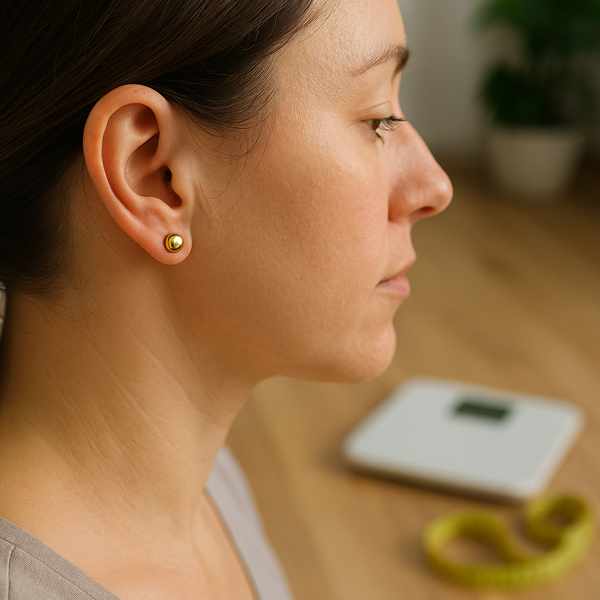
While diet and exercise remain the foundation of fat loss, some are exploring non-traditional tools like weight loss earrings.
But what are weight loss earrings, and do they really work?
Understanding Weight Loss Earrings
These points, often located on the ear, are connected to various organs and functions in the body.
Types of weight loss earrings include:
- Magnetic earrings
- Target pressure points linked to hunger and digestion
- Bio-energy earrings
The Science (or Theory) Behind It
The theory suggests that stimulating certain points can curb appetite.
Supporters believe these earrings help by:
- Targeting the hunger-related areas of the ear
- Increasing energy levels
- Improving digestion and fat processing
It’s important to note that while anecdotal success exists, clinical evidence is still limited.
Benefits Claimed by Users
Some users of weight loss earrings report noticeable changes such as:
- Feeling full more quickly during meals
- Reduced emotional or mindless eating
- Mild increase in energy
- Convenient and discreet
For many, it’s the non-invasive nature and ease of use that make them appealing.
Are Weight Loss Earrings Safe?
While generally considered safe, users should be cautious if they have:
- Allergies to certain metals
- Skin sensitivity
- Always consult a healthcare provider first
Also, results can vary, and these earrings should not be used as a sole method of weight loss.
How to Make the Most of Them
To ear magnets for weight loss get the best out of weight loss earrings:
- Follow the manufacturer’s usage guidelines
- Pair with healthy habits
- Track your progress
- Be patient
Do They Actually Work?
Weight loss earrings are not magic solutions.
Think of them as:
- Supplementary tools
- Motivational accessories
- Worth a try if you're curious and mindful
Should You Try Them?
While scientific proof is limited, some individuals report real benefits.
If you're considering trying them, make sure to:
- Buy from reputable brands
- Don’t expect overnight miracles
- Combine with lifestyle changes
In the end, they might be the gentle nudge you need — or just an experiment along the way.